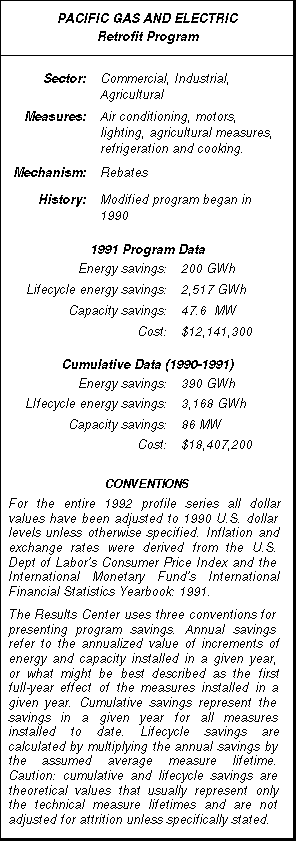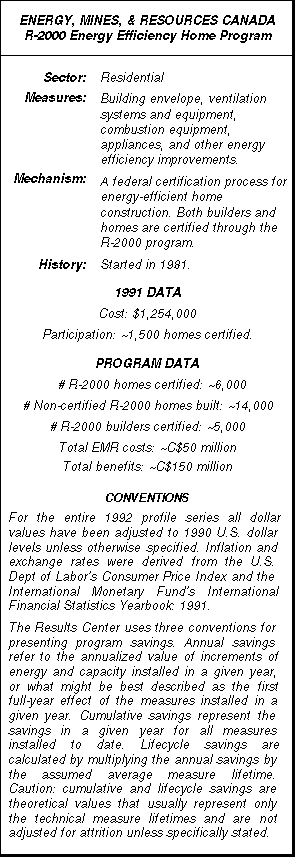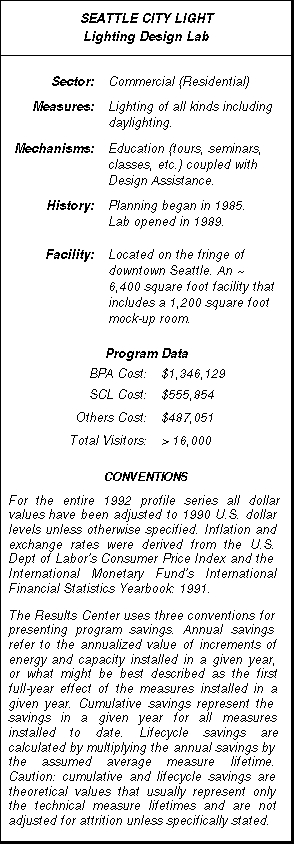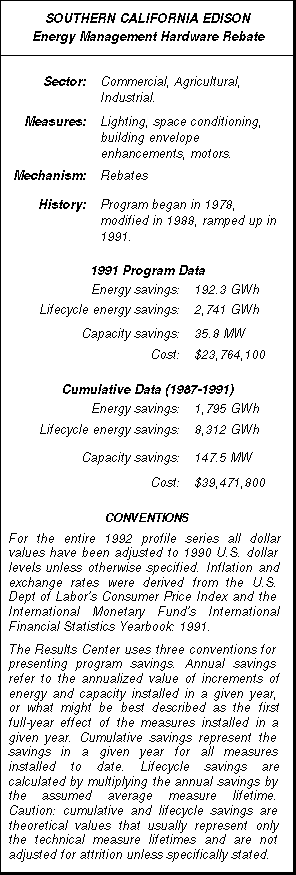EXECUTIVE SUMMARY
 PG&E’s Retrofit Program for commercial, industrial and agricultural customers encompasses five basic end-use areas: air-conditioning, motors, lighting, agricultural, and refrigeration & cooking. Through the Retrofit Program, eligible customers receive incentives in the form of rebates for improving the efficiency of their facilities by using qualifying, high efficiency equipment. While the Retrofit Program is marketed primarily to small and medium non-residential customers, any non-residential account may apply for rebates under the program. Commercial lighting is the largest component of the program. In 1991, 59% of the lifecycle savings realized through the program resulted from lighting projects, and commercial customers’ retrofits represented 78% of those savings.
PG&E’s Retrofit Program for commercial, industrial and agricultural customers encompasses five basic end-use areas: air-conditioning, motors, lighting, agricultural, and refrigeration & cooking. Through the Retrofit Program, eligible customers receive incentives in the form of rebates for improving the efficiency of their facilities by using qualifying, high efficiency equipment. While the Retrofit Program is marketed primarily to small and medium non-residential customers, any non-residential account may apply for rebates under the program. Commercial lighting is the largest component of the program. In 1991, 59% of the lifecycle savings realized through the program resulted from lighting projects, and commercial customers’ retrofits represented 78% of those savings.
In order to participate in the program, the customer fills out a one-page application form after purchasing and installing the qualifying products, attaches the original paid invoice, and mails the form to PG&E. Upon receipt of the completed application and applicable invoices, program staff verify that the application is correct, and a rebate check is sent to the customer. The maximum rebate is $100,000 per customer per year.
Annual energy savings due to the Retrofit Program more than doubled between 1990 and 1991, peak capacity savings increased by 24%, and lifecycle savings nearly quadrupled. This increase in savings was due to a shift in program focus to lighting measures, as well as the increased activity inspired by the California Collaborative which called for a dramatic increase in DSM expenditures and emphasis on measured savings. Whereas lighting projects in all sectors made up 22% of the annual savings in 1990, lighting accounted for 41.2% of the annual program savings in 1991. The Retrofit Program’s expenditures increased six-fold between 1989 and 1990, to $6.2 million, and then doubled to $12 million in 1991. The majority of PG&E’s costs for implementing the Retrofit Program are incentive payments in the form of rebates. In 1991, incentive payments were almost $11 million, while administrative costs were approximately $1.1 million.
Perhaps the most successful part of the program, second only to the actual savings achieved, is its evolution. Through a continual process of feedback from its customers, and through comprehensive evaluation, PG&E has been able to refine the program to increase its efficacy. For instance, PG&E found that its rebate application forms were cumbersome, so it standardized the forms for simplicity. Additionally, rebate levels were increased for some measures, making them more attractive. Conversely, some rebate levels were lowered to better reflect the incentive required by the measure. Finally, the Retrofit Program is nicely dovetailed with PG&E’s Customized Rebate Program. (See Profile #4) As technologies and state-of-the-art applications become common in the customized incentive program, what were innovative efficiency measures are shifted over to and incorporated into the more straightforward Retrofit Program, serving to transform the market for energy efficiency retrofits.
[CLICK HERE TO DOWNLOAD THE ENTIRE 20 PAGE PROFILE IN PDF FILE FORMAT]
This profile was produced by

 The R-2000 program was initiated by Energy, Mines and Resources (EMR) in 1981 with the goal of affecting the construction of energy-efficient homes in Canada by establishing a new energy performance standard, training builders to construct houses to that standard, and stimulating the demand for such homes. R-2000 has become one of the best known new residential construction programs of its kind. Its homes are as much as 50% more energy-efficient than homes built to Canada’s existing codes and the program has proven to be a viable means of stimulating the construction of energy-efficient homes regardless of R-2000 certification.
The R-2000 program was initiated by Energy, Mines and Resources (EMR) in 1981 with the goal of affecting the construction of energy-efficient homes in Canada by establishing a new energy performance standard, training builders to construct houses to that standard, and stimulating the demand for such homes. R-2000 has become one of the best known new residential construction programs of its kind. Its homes are as much as 50% more energy-efficient than homes built to Canada’s existing codes and the program has proven to be a viable means of stimulating the construction of energy-efficient homes regardless of R-2000 certification. The Lighting Design Lab (referred to as "the Lab" and "LDL") is a unique project in the Northwest, conceived by the Natural Resources Defense Council and the Northwest Conservation Act Coalition, funded jointly by the Bonneville Power Administration, Seattle City Light, and a growing list of other sponsors (including in-kind donations by manufacturers of energy-efficient lighting technologies). The lab is operated by Seattle City Light.
The Lighting Design Lab (referred to as "the Lab" and "LDL") is a unique project in the Northwest, conceived by the Natural Resources Defense Council and the Northwest Conservation Act Coalition, funded jointly by the Bonneville Power Administration, Seattle City Light, and a growing list of other sponsors (including in-kind donations by manufacturers of energy-efficient lighting technologies). The lab is operated by Seattle City Light. Southern California Edison’s Energy Management Hardware Rebate Program (EMHRP) has been providing incentives for energy efficiency improvements to commercial, industrial, and agricultural (CIA) customers since 1978. Measures range from lighting and space conditioning improvements to building envelope enhancements to motor upgrades. As a function of the program all installations are preapproved and cash rebates are issued for up to 30% of the installed cost of the measures with no maximum rebate.
Southern California Edison’s Energy Management Hardware Rebate Program (EMHRP) has been providing incentives for energy efficiency improvements to commercial, industrial, and agricultural (CIA) customers since 1978. Measures range from lighting and space conditioning improvements to building envelope enhancements to motor upgrades. As a function of the program all installations are preapproved and cash rebates are issued for up to 30% of the installed cost of the measures with no maximum rebate.